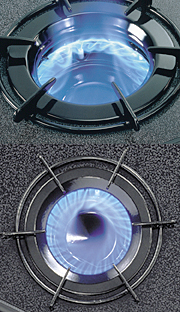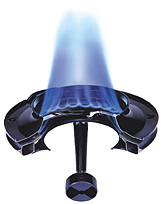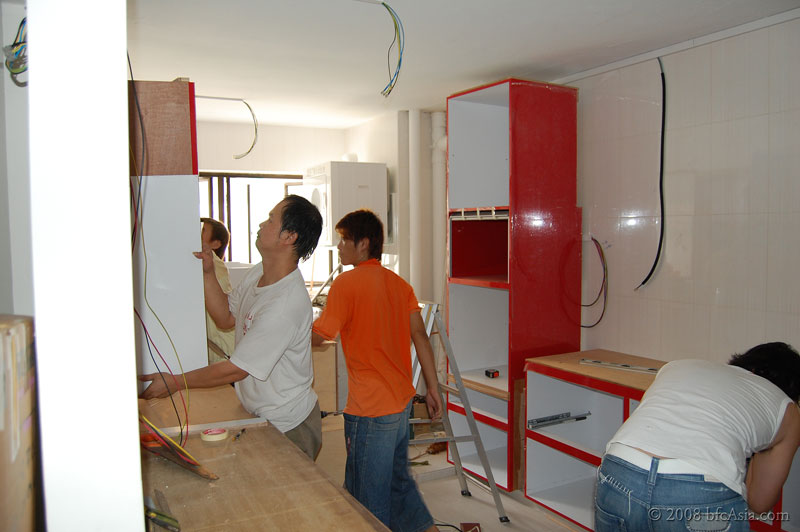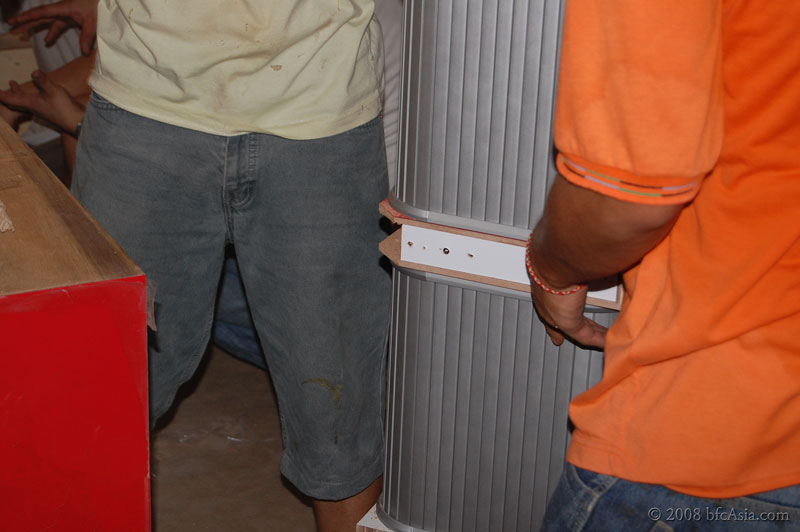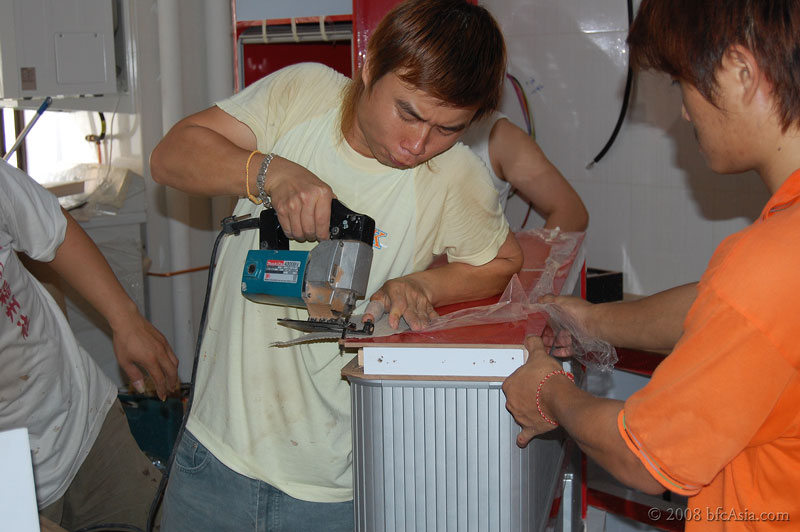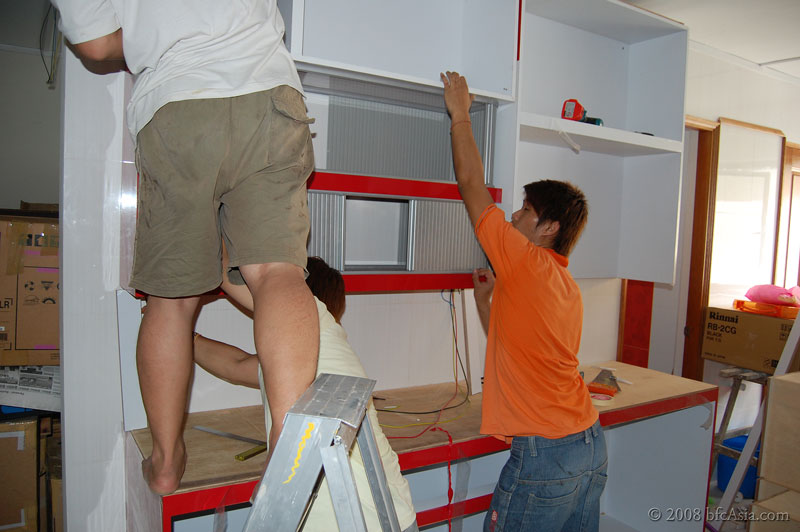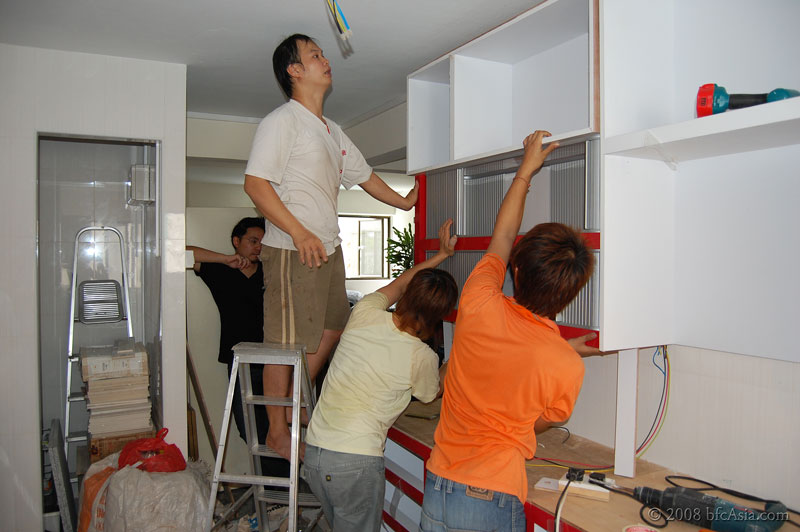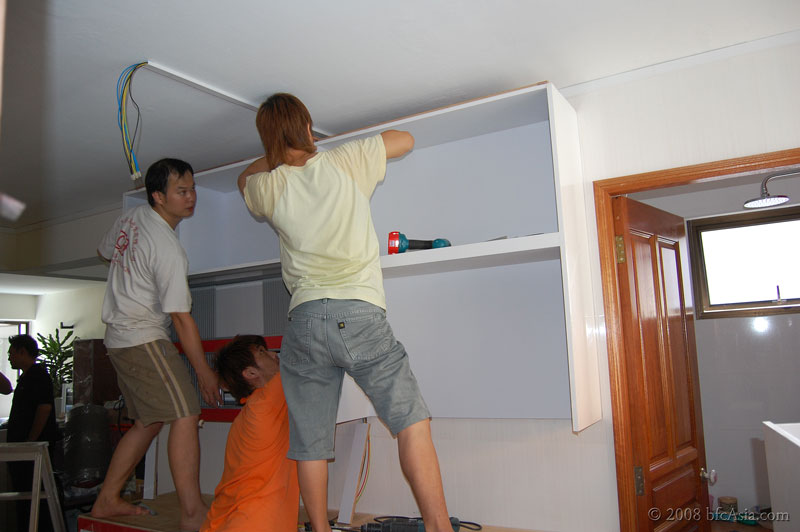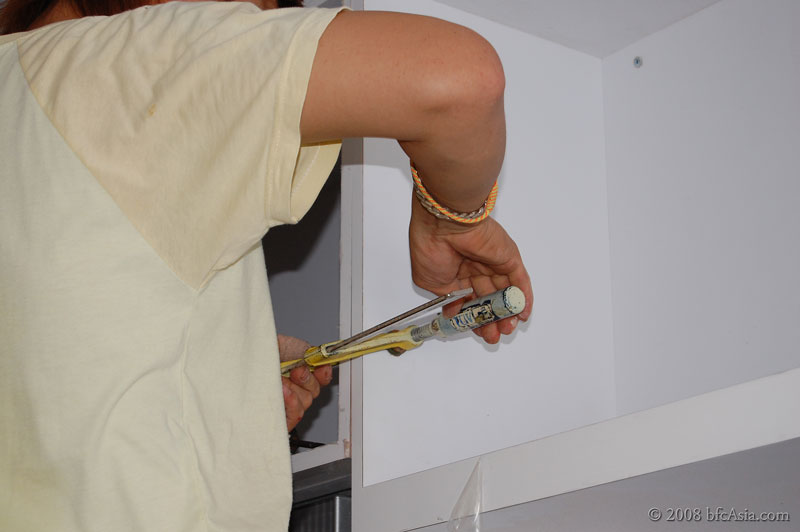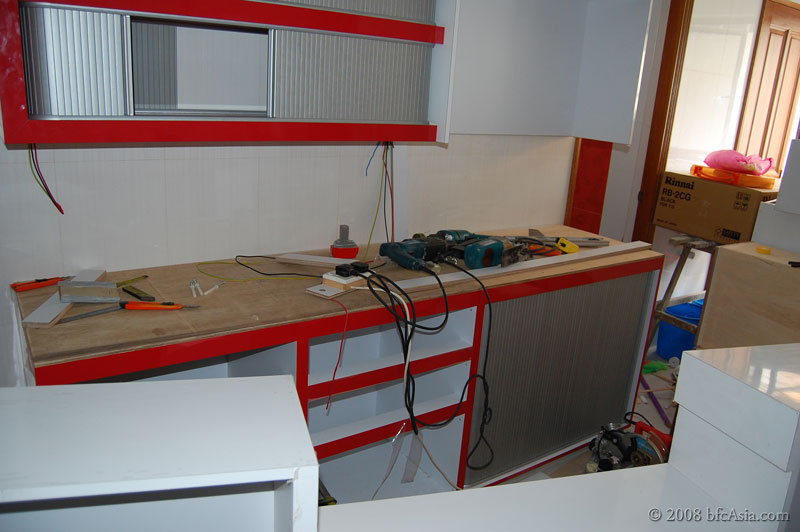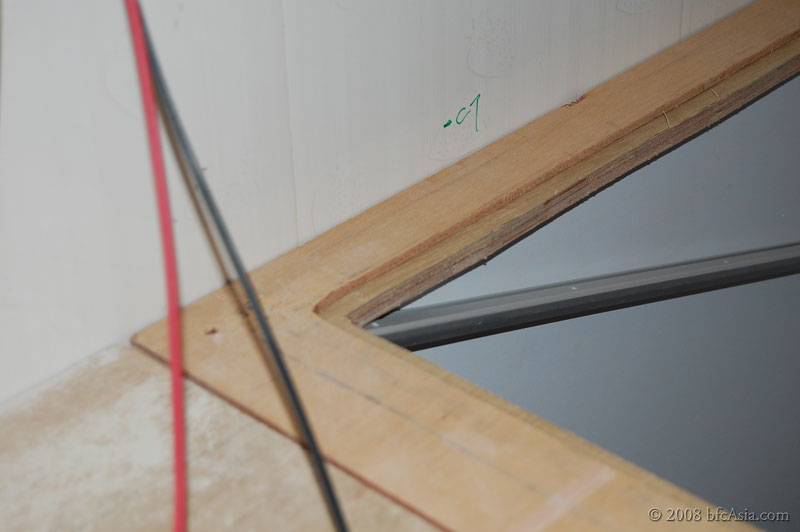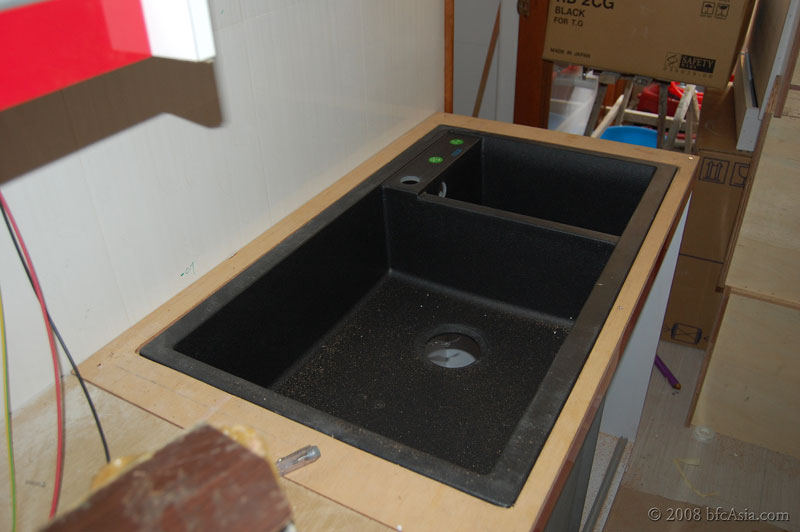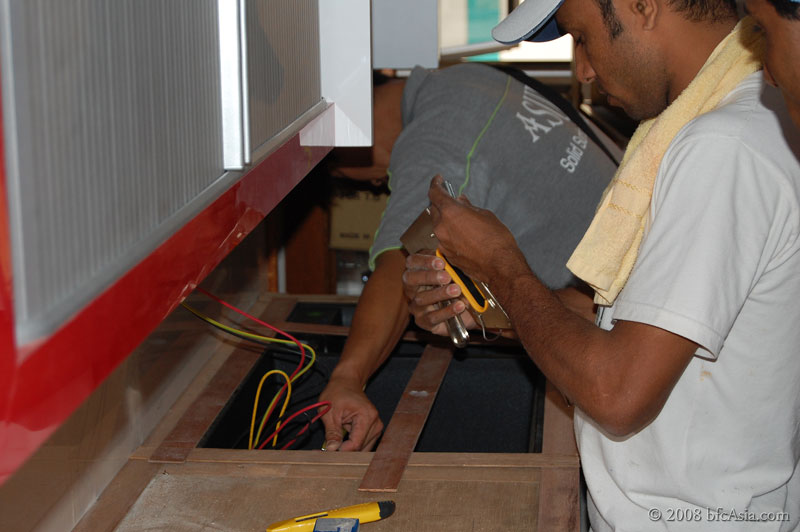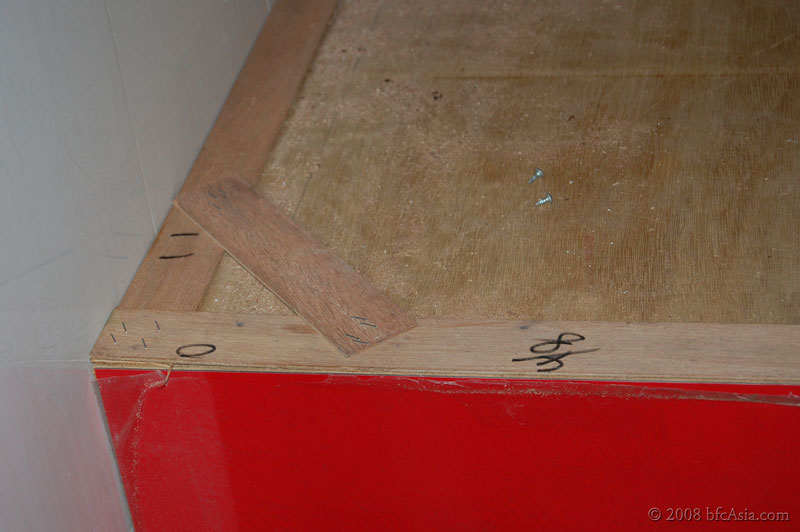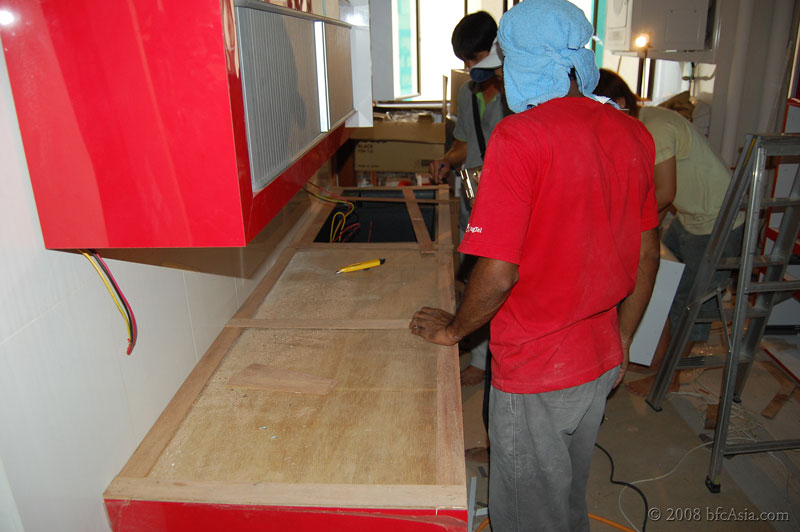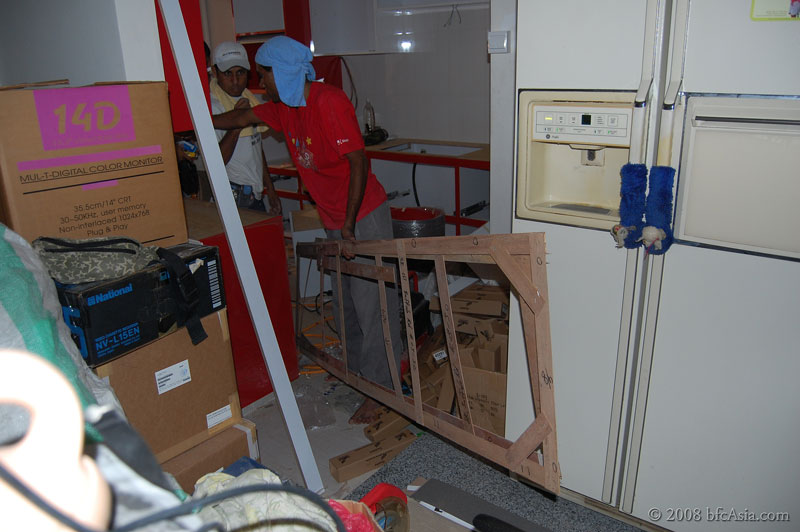Today a new plumber came to re-install my toilet bowl.
I had complained of a stench coming from the toilet bowl, particularly from 7-8 AM and around 7-8 pm, coinciding with the time when most residents on the upper floors use their toilet.

Obviously something was very wrong with the installation.
When the first plumber came several weeks ago to install the toilet bowl, I had asked why he did not apply silicone sealant around the rim of the pan collar, before he set down the toilet bowl over the collar.
The pan collar is the piece of plastic that connects the toilet bowl to the sewage pipe on the toilet floor. I had felt that a silicone seal would ensure that no smell escapes from the sewage pipe into the toilet.
The plumber said nonchalantly "nobody does that". I left it at that. He is the plumber and should know better than a layman like me, I thought to myself. How I wished I had been more assertive!
After installation, the toilet smelled for several days. Seemed that each time someone on the upper floors flushed the toilet, the smell would escape into my toilet.
I brought the matter to my ID's attention, and requested another plumber to re-install the toilet bowl. I had lost confidence in the first plumber.
After a lapse of several weeks, the new plumber came.
He was concerned he might chip the spanking new toilet bowl in the removal process. That was the ID's concern, not his, I told him, and in any event I could not live with a smelly toilet! He only needed to exercise care not to cause any chipping, that was all.
I told him what I had suspected to be the cause of the smelly toilet: no silicone seal on the pan collar. He agreed as much, though he was aware some plumbers usually do not apply any silicone to the pan collar and no one had complained of any stench.
He noted I had my air vent pipe removed. He said he had read in the papers that some residents had also complained of a stench in their toilets after the apartment block had been upgraded, particularly where the cast iron sewage pipe had been replaced with a uPVC pipe, so probably the problem had something to do with the removal of the air vent pipe.
The logic escaped me, so I was not persuaded.
The plumber got down to work. He managed to unseat the toilet bowl without damaging it. Well done!
To our surprise we found that the toilet bowl had two rectangular openings measuring about 3-inches square on the back of the toilet bowl chamber.
Ah-ha, so that explained why there was a stench: as there was no silicone seal on the pan collar, the smell escaped from the sewage pipe into the toilet bowl chamber, then through the rectangular openings at the toilet bowl base into the toilet room itself.
....
This is what a pan collar looks like. This one has an 1-inch offset:
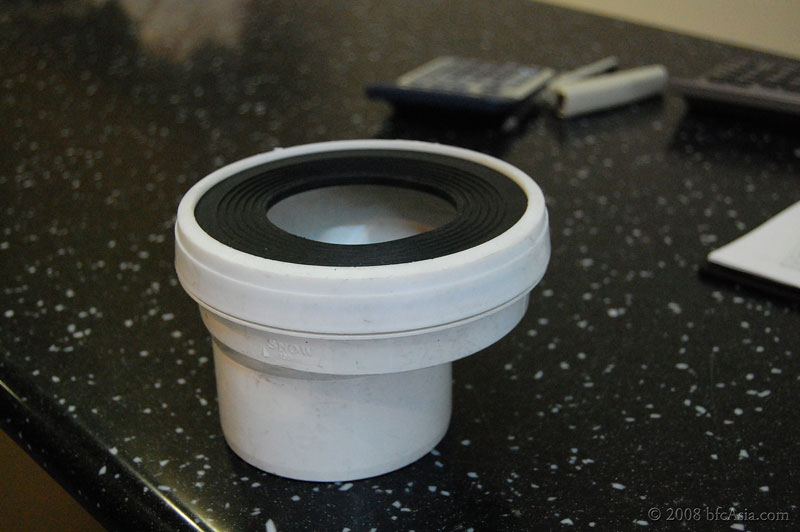
Sewage pipe outlet - bad odor if inserted pan collar is not sealed with silicone

Thirty minutes later, the toilet bowl was seated back onto the pan collar, now with silicone sealant applied around the rim, as well as on the rubber ring, as the plumber felt that perhaps the toilet bowl outlet pipe was a bit small, resulting in the rubber ring making a less-than-perfect seal around the outlet pipe.
The improvement was quite immediate: the smell was perceptively much reduced!
It would probably take a few more days to confirm that the smelly problem has indeed been solved.
ADDENDUM:
It worked!! I was delighted this morning because the toilet for the first time did not smell.
However, sometimes when someone flushes his toilet on the upper floors, pressure is created that can suck water from your toilet bowl into the sewage pipe. When that happens the water level in the bowl will drop so drastically that it leaves a gap in the "S" bend, allowing foul air from the sewage pipe to seep into your toilet.
So if your toilet smells bad, first check there is sufficient water in the toilet bowl. No, not in the cistern but in the toilet bowl itself. This water in the bowl acts as a barrier to foul air from the sewage pipe, and prevents any foul smell entering the toilet through the sewage pipe.
If the water level in the toilet bowl is high enough above the "S" bend, then you should suspect an unsealed pan collar as the culprit for the stink.
Now, what about the report that some people complained their toilets smelled after the HDB upgrading exercise?
I believe that had nothing to do with the replacement of the cast-iron sewage pipe nor with the removal of the air vent pipe. The reason for the stink was very likely due to the bad installation of their toilet bowl. It was likely cracks developed at the cement base of the toilet bowl when the sewage pipe was changed, and because the pan collar of the toilet was not properly sealed, foul air escaped from the sewage system into the toilet.
LESSON LEARNT:
Ensure your plumber applies a silicone seal around the pan collar when he first installs the toilet bowl. That is the proper and correct procedure to install the toilet bowl. In the west plumbers use a wax gasket to ensure an airtight seal between the toilet bowl and the sewage pipe.
Readers will recall that during the 2003 SARS epidermic, it was reported in Hongkong the virus spread from one floor to the floor below via the sewage pipe. Although details were not divulged in the press report, I suspect the leak was caused by improper toilet bowl installation.
When someone flushes his toilet on the upper floors, obviously the foul air carrying viruses and bacteria will be "flushed" into the toilet on the floor below through the unsealed pan collar. Hence the stink.
I would probably have remained ignorant today of how unsanitary my toilet installation was had I not experienced the stinky toilet bowl problem.
Now, even if you have a toilet bowl that is completely sealed so that no air could escape from the chamber once the toilet is cemented to the floor, it is still advisable to ask your plumber to apply silicone sealant to the pan collar. Otherwise you risk allowing viruses to enter your toilet each time someone on the upper floors flushes the toilet.
As we know, cement is porous and over time will develop cracks so that most people will find their toilets stink after some years, especially for those with unsealed pan collars. You can prevent the stink by getting your plumber to apply silicone sealant to the pan collar during the initial installation of the toilet bowl.
Why risk your family's health?
POSTSCRIPT: Public health was at risk so I posted the issue on a forum, see below:
A friend pm'ed me asking why apply silicone sealant when the plumber already used white cement to seal the toilet bowl to the floor?
Well, the silicone sealant is applied to the pan collar -- the piece that is connected to the sewage pipe hole. If the pan collar is not sealed, foul air (and soil too) will seep into yr toilet bowl chamber due to the air presure at work.
Like others, I did not ask my plumber to seal the pan collar when he first installed the bowl. After installation, my toilet smelled badly, particularly when someone on higher floors flushed the toilet.
My toilet was a 1-piece design, and had 2 rectangular holes at the back of the toilet bowl. Hence I could detect the foul smell. More importantly, I realized the risk I was putting my family to, breathing in bad air, particularly bacteria and viruses from sick neighbors upstairs after they had flushed the toilet.
If not for the toilet design I had chosen, I would not have detected the foul smell, and the problem probably would only surface several years later.
You don't get any foul smell if your toilet bowl has no openings and is fully sealed by the white cement onto the floor. But over time the cement will develop tiny cracks, that is when you begin to detect foul smell from the toilet bowl area. That happened to my old toilet (after 5 yrs), although at that time I did not know what caused the bad smell. Maybe the earthquakes from Indonesia over last 2 yrs was a contributory factor, causing tiny cracks in the cement to appear, thereby allowing foul air to seep into the toilet space?
Anyway, when my plumber told me he never applied silicone sealant to the pan collar I realized probably all plumbers in Singapore also install toilet bowls without applying silicone sealant!
That is very unhygienic. Ask yr plumber if that is true. Probably he will tell you he don't use silicone sealant for your toilet bowl's pan collar too.
With unsealed toilet bowls we are probably breathing in all sorts of viruses and bacteria discharged from sick neighbors in the block without knowing it.
The HK health authorities at first were mystified how the SARS virus were spreading in the same apartment block. Finally they traced the spread to faulty sewage pipe.
The authorities did not reveal what caused the leak (in order not to spread public panic) but the culprit was the unsealed toilet bowl that allowed foul air (carrying the virus) to spread from one upper flat to another lower down. If the toilet pipe had merely been leaking water, do you think the affected flat owner would not have noticed that and left the leak unattended? Of course not! So I believe SARS had spread via the unsealed toilet bowl pan collar!
Now that my toilet bowl has been re-installed, there is no more foul smell !
So, please remind yr plumber to apply silicone sealant to the pan collar.
